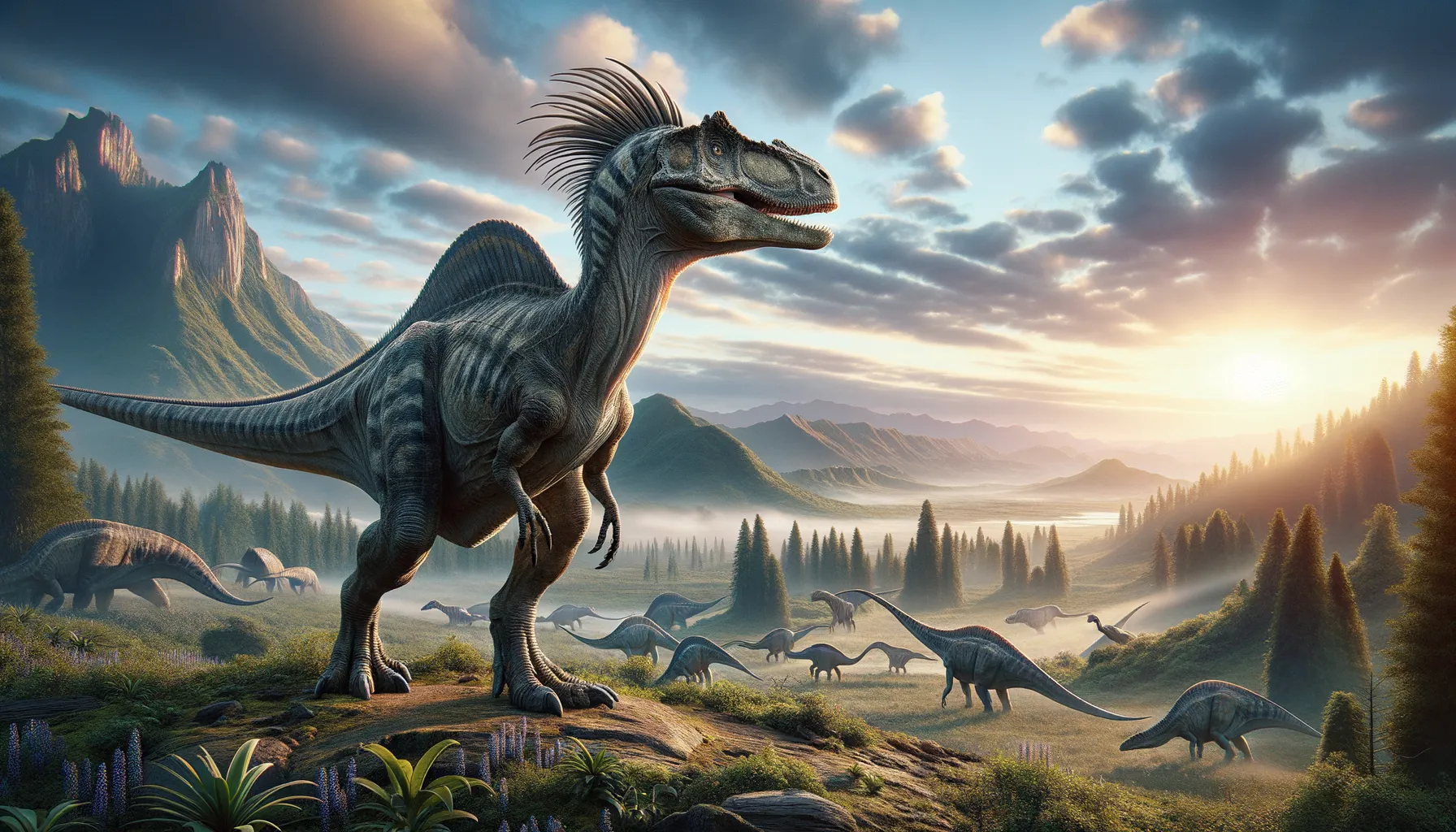
Charonosaurus
Majestic crests of the Cretaceous world!
Period
Cretaceous
Length
Around 10 meters in length.
Height
Roughly 4 meters tall at the hips.
Weight
Approximately 2 to 3 tons.
Charonosaurus was a large herbivorous dinosaur known for its distinctive crest on its head, belonging to the hadrosaurid family. It roamed the earth during the late Cretaceous period, approximately 70 million years ago. This dinosaur is related to the well-known Parasaurolophus, sharing similar physical traits. Primarily found in East Asia, Charonosaurus lived in groups, suggesting complex social behavior. Its strong hind limbs and long, muscular tail provided balance and mobility.
Diet
Charonosaurus was herbivorous, feeding mostly on foliage, twigs, and branches. Its beak-like mouth was perfect for cropping tough plant materials, including ferns and cycads.
Hunting
As a herbivore, Charonosaurus did not hunt. Instead, it foraged in large groups to find suitable vegetation. Its primary defense against predators was likely its size and herd behavior.
Environmental challenges
Living during the Late Cretaceous, Charonosaurus faced a changing climate with rising sea levels. These changes likely led to shifts in vegetation, requiring them to adapt to varying food sources. They also had to contend with potential predators like tyrannosaurs. Environmental pressures necessitated migrations to follow food sources across vast distances.
Speed
Moderate, with the ability to move efficiently in groups.
Lifespan
Estimated to be around 20 to 30 years.
First discovery
Discovered in China in the early 21st century.
Fun Facts
- Charonosaurus was a large herbivorous dinosaur that lived during the Late Cretaceous period about 70 million years ago.
- The name Charonosaurus comes from 'Charon', the ferryman of the dead in Greek mythology, due to the discovery site near the Amur River, which forms a natural border, much like the River Styx.
- It is closely related to the well-known Parasaurolophus, sharing the famous crest on its head, although the crest of Charonosaurus was slightly simpler in design.
- Charonosaurus is believed to have been able to make low-frequency sounds with its long, tube-like crest, possibly to communicate with others or perhaps to ward off predators.
- Fossils of Charonosaurus were first discovered in China, and it is one of the largest known hadrosaurs, or 'duck-billed dinosaurs', from that region.
- Despite its size, Charonosaurus likely relied on its speed and agility to escape predators, using its strong, muscular legs.
- The discovery of Charonosaurus has helped paleontologists understand more about dinosaur migration patterns between Asia and North America.
Growth and Development
Charonosaurus hatched from eggs and grew rapidly to reduce vulnerability to predators. Juvenile dinosaurs likely stayed with the herd for protection and for learning essential survival skills. As they matured, they developed their distinctive crests, which might have been used for communication or display.
Habitat
Charonosaurus inhabited areas with abundant water sources, like river deltas and floodplains. These regions offered lush vegetation essential for their diet. They favored open habitats where they could maintain vigilance against predators and move in large groups.
Interaction with other species
Charonosaurus likely coexisted with other herbivorous dinosaurs, competing for plant resources. Its large size and herd behavior enabled it to defend against predatory dinosaurs. It might have engaged in mutualistic relationships with smaller animals that helped control pests.
Natural lifespan
Its natural lifespan was around 20 to 30 years.
Reproduction
Charonosaurus reproduced by laying eggs in nested colonies, similar to many other dinosaurs. Nests might have been constructed in communal sites, providing additional protection. Hatchlings were likely cared for by the adults, ensuring higher survival rates through early vulnerable stages.
Social behaviour
Charonosaurus traveled in herds, which could have ranged in size and composition. This social structure provided numerous advantages, including protection from predators and cooperative care for young. Vocalizations and visual signals, facilitated by their crests, were likely used for communication within the group.
Fossil locations
Charonosaurus fossils have been predominantly found in northeastern China. The most notable discoveries were made near the Amur River. These sites provide valuable insight into the rich biodiversity and ecology of the Cretaceous period.
